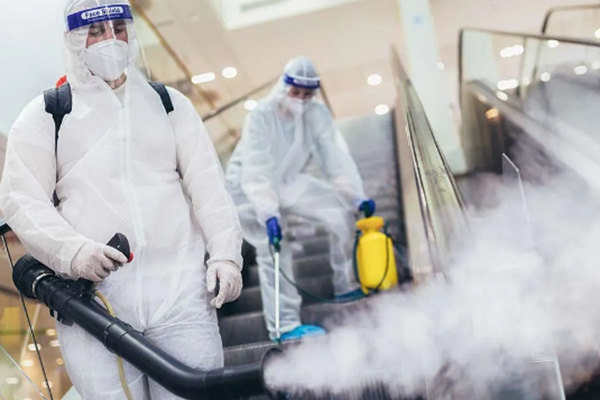In the ongoing effort to maintain clean and safe environments, particularly in healthcare settings, hydrogen peroxide fogging has emerged as a promising disinfection method. But what exactly is hydrogen peroxide fogging, and how effective is it? This article delves into the use of hydrogen peroxide for fogging, examining its benefits, applications, and considerations.
Hydrogen peroxide fogging is a method of disinfection that involves the aerosolization of hydrogen peroxide into tiny droplets or vapor, which then disperses throughout an enclosed space. The fog or vapor is designed to reach all surfaces, including hard-to-reach areas, effectively killing bacteria, viruses, and fungi.
Hydrogen peroxide, a common household disinfectant, works by releasing oxygen radicals that attack the cell walls of microorganisms, effectively neutralizing them. When used in fogging, the hydrogen peroxide is typically vaporized using specialized equipment, allowing it to penetrate areas that traditional cleaning methods might miss.

Applications and Effectiveness
- Healthcare Settings: Hydrogen peroxide fogging is widely used in hospitals, clinics, and laboratories to disinfect patient rooms, operating theaters, and equipment. Its ability to reach all surfaces, including those that are difficult to clean manually, makes it an ideal choice for maintaining sterile environments. Research has shown that hydrogen peroxide fogging can significantly reduce the microbial load on surfaces, making it a valuable tool in infection control.
- Food Processing and Storage: In the food industry, hydrogen peroxide fogging is employed to sanitize processing plants, storage areas, and packaging. The fogging process helps to eliminate harmful pathogens that can contaminate food products, thereby reducing the risk of foodborne illnesses.
- Commercial and Public Spaces: Beyond healthcare and food processing, hydrogen peroxide fogging is increasingly used in offices, schools, gyms, and public transportation. The ability to quickly disinfect large areas makes it an attractive option for businesses and organizations looking to maintain a safe environment for employees and customers.
- Residential Use: While less common, hydrogen peroxide fogging can also be used in homes, particularly in cases where deep cleaning is necessary, such as after mold contamination or during flu season.
Safety Considerations
While hydrogen peroxide fogging is an effective disinfection method, it is not without its risks. The concentration of hydrogen peroxide used in fogging is typically higher than that found in household disinfectants, which can pose health risks if not used properly. Here are some safety considerations:
- Proper Ventilation: After fogging, the area should be well-ventilated to allow the hydrogen peroxide to dissipate. Prolonged exposure to high concentrations of hydrogen peroxide can cause respiratory irritation and other health issues.
- Personal Protective Equipment (PPE): Those performing the fogging should wear appropriate PPE, including gloves, masks, and eye protection, to avoid direct contact with the hydrogen peroxide solution.
- Equipment Handling: The equipment used for fogging should be operated by trained personnel to ensure proper application and avoid accidents.
- Surface Compatibility: While hydrogen peroxide is generally safe for most surfaces, it can cause discoloration or damage to certain materials. It’s important to test a small area before a full-scale application.
Limitations and Considerations
While hydrogen peroxide fogging is effective, it is not a replacement for regular cleaning practices. Physical cleaning is necessary to remove dirt and debris before fogging, as these can shield microorganisms from the disinfectant. Additionally, hydrogen peroxide fogging may not be suitable for all environments, particularly those with sensitive electronics or materials that could be damaged by moisture.
Furthermore, while hydrogen peroxide fogging is effective against a broad spectrum of pathogens, it is not always effective against bacterial spores, which may require higher concentrations or longer exposure times.
Conclusion
Hydrogen peroxide fogging is a powerful tool in the arsenal of disinfection methods, offering an effective way to sanitize large areas and hard-to-reach surfaces. Its applications in healthcare, food processing, and public spaces make it a valuable option for ensuring cleanliness and safety. However, it must be used with caution, considering the potential health risks and limitations. Proper training, equipment, and safety measures are essential to maximize the benefits of hydrogen peroxide fogging while minimizing risks.